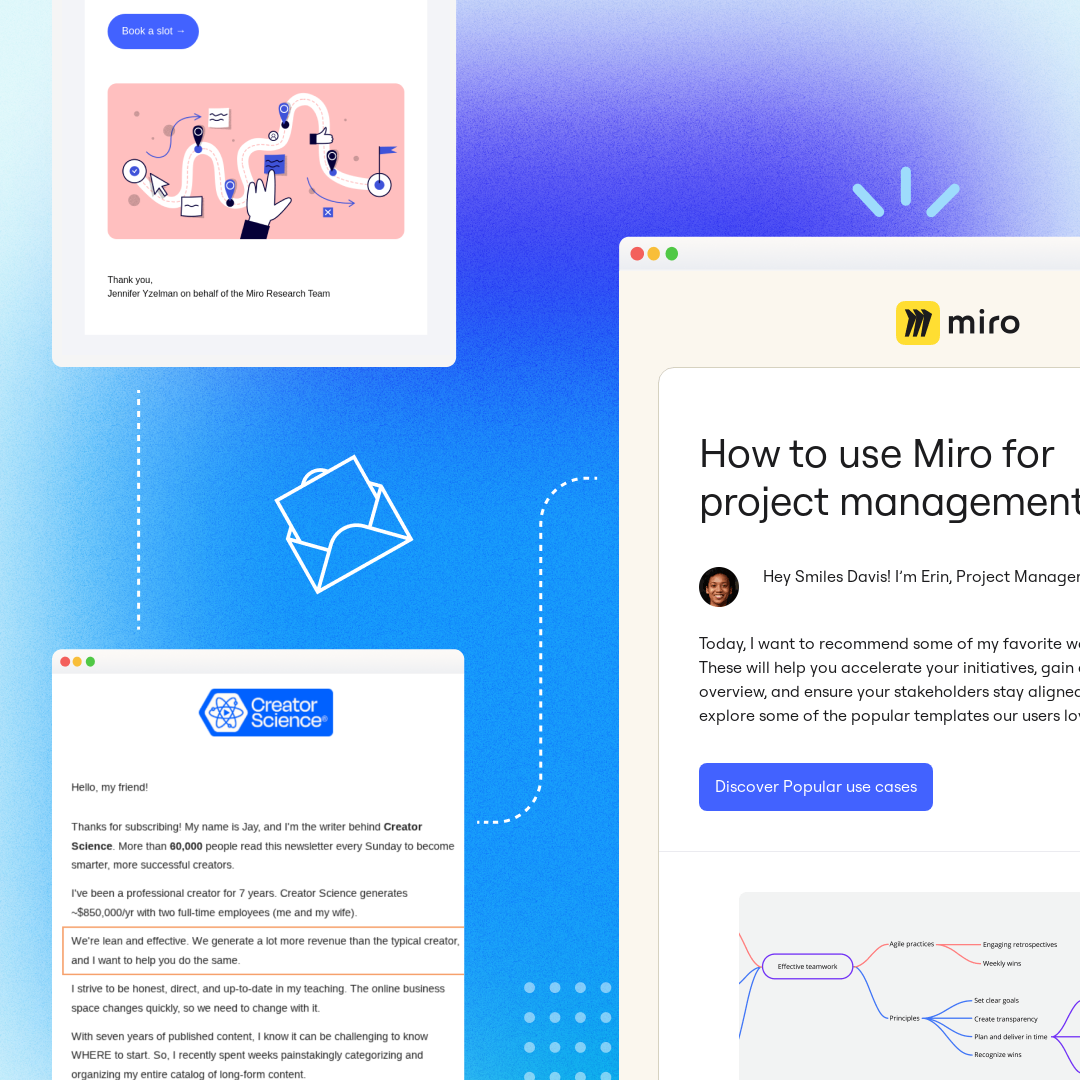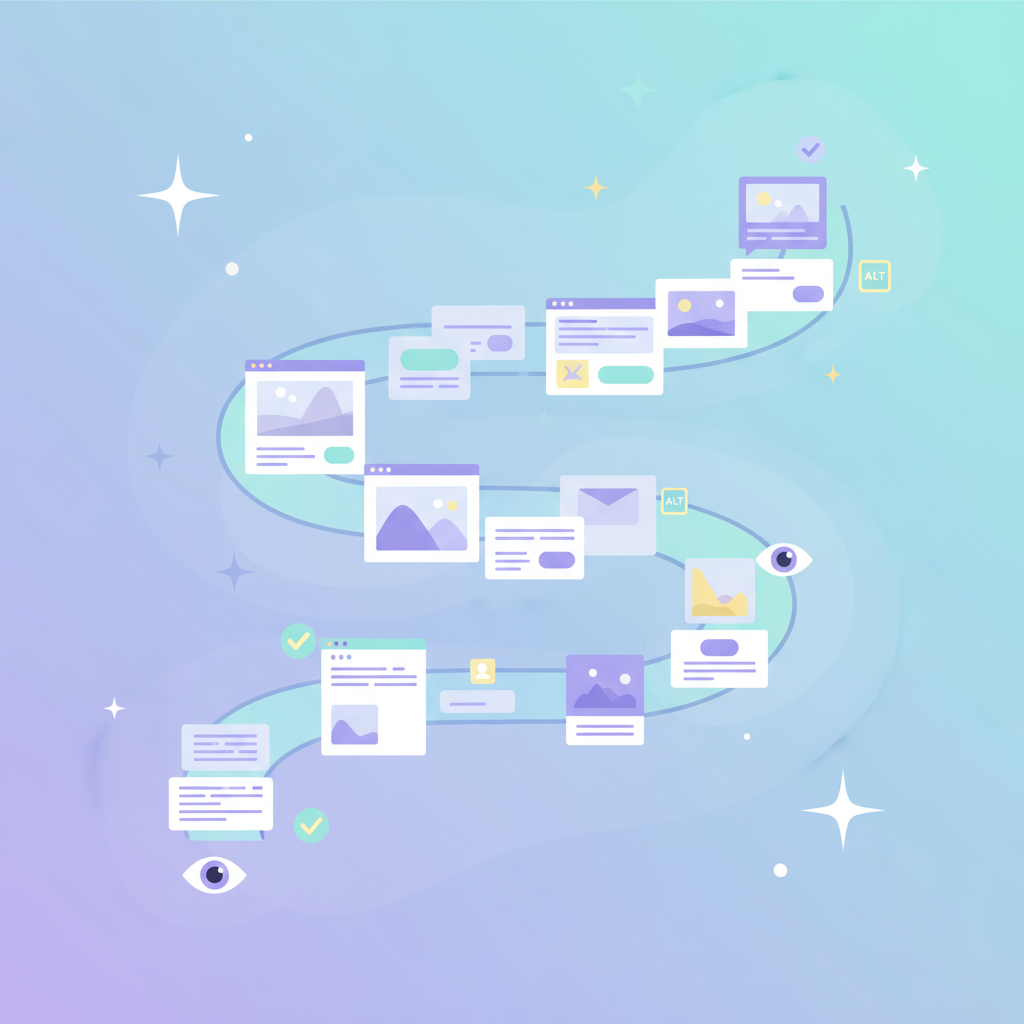
The success of a Software as a Service (SaaS) company hinges significantly on the strength of its onboarding process. Research indicates that effective onboarding can lead to an 80% increase in customer retention. Emails play a pivotal role in this.Here we delve into the realm of SaaS onboarding emails, from understanding their importance to reviewing best practices and overcoming common challenges, all enriched with real-world examples.
What are SaaS Onboarding emails?
The SaaS onboarding process guides new users to understand and use a SaaS application effectively after signing up.SaaS onboarding emails are a series of emails sent to new users after they sign up for a software service. These emails are typically sent out in various phases, all aimed at helping the user get maximum value from the product as quickly as possible. These phases include, but are not limited to:
- Account setup
- Product tours
- Instructions for basic tasks
- Follow-up communication, including a survey
Why are SaaS Onboarding Emails So Important?
Effective onboarding emails are critical for SaaS businesses because they foster user engagement and improve overall user experience. They aim to guide users through the early stages of product use by helping them understand its core features, benefits, and value in return. This leads to better engagement and higher retention.SaaS onboarding emails solve the common challenges business face during the onboarding process, such as user drop-off and user confusion over product features.When users understand the product's value and how to use it effectively, they're more likely to become long-term, paying customers. They’re also more likely to have a positive perception of the service and brand, increasing the likelihood of them encouraging peers to use and purchase the service.
Effective SaaS Onboarding Email Best Practices
Following certain best practices can help optimize your onboarding emails, improving customer engagement and retention. Let's explore five of these key practices for the best SaaS onboarding emails:
Personalization
Personalizing onboarding emails can lead to a 26% increase in open rates. Tailoring onboarding communications to individual users based on their profile, behavior, and preferences ensures they receive relevant content, fostering a sense of connection and improving their product experience.
Timing and Automation Tools
Automating onboarding emails allows you to send timely, trigger-based messages, enhancing user engagement.Automation tools can simplify this process, ensuring consistent communication without additional manual effort.
A/B Testing and Experimentation
A/B testing enables you to continually improve your onboarding emails by testing different versions and analyzing which performs better.This ongoing experimentation allows you to refine your strategy based on user response, leading to increased engagement and a more streamlined marketing strategy that is cost-saving in the long term.
User Feedback and Survey Integration
Including user feedback and surveys in your onboarding emails can provide invaluable insights into user experiences, preferences, and challenges.They don’t have to be long (in fact, it’s advisable to keep them short and sharp so customers don’t lose interest), but asking key questions such as overall satisfaction with the sign-up process, what they intend to use the product for etc., can guide product improvements and enhance your onboarding strategy.
Continual Optimization
Onboarding emails should be regularly reviewed and optimized based on performance metrics, user feedback, and evolving business goals. You should set a cadence in which you will review and optimize your onboarding emails.This continuous improvement approach can ensure that your onboarding emails remain relevant over time and maintain their effectiveness for your target audience and business.
Overcoming Common Challenges in SaaS Onboarding Emails
While creating effective onboarding emails, SaaS companies often face several challenges.
Email Bounce and Unsubscribe Rates:
High bounce and unsubscribe rates can limit the reach of your onboarding emails.To combat this, ensure that your emails offer value, are personalized, and respect the recipient's inbox by not over-communicating. Try and avoid emails that are heavy in content or have unoptimized images.
Onboarding Drop-offs:
Users may abandon the onboarding process if they find it confusing or overwhelming. A sequence of well-crafted onboarding emails can guide users step-by-step through the process, reducing drop-offs. The simpler the emails, the better.PRO tip: Collaborate with someone outside of your team who doesn't know the process and ask them to give you feedback!
Complex Product Features in Onboarding Emails:
Overly complex onboarding emails can confuse users.Ensure that your emails only focus on key product features, using clear, concise language and laymen’s terms (rather than highly technical language)Use supporting visuals to enhance understanding. And avoid the use of many clashing colors, multiple font types and sizes, and dead links.
Successful SaaS Onboarding Email Examples
Depending on where a user is on their onboarding journey, they require different types of emails to guide them.Understanding these main types of onboarding emails and their role in the user's journey can help you craft effective messages. Here are some different types of SaaS onboarding email examples:
Example 1: Welcome Email (from Trello)
The SaaS welcome email is the start of your relationship with the user, so it is absolutely critical to get it right.This welcome email from Trello is a prime example of engaging the user right from the start. The email is straightforward, sets a friendly tone, and utilizes a mascot for a more light-hearted energy.It also provides a link to a guide for the customer, making it easy for users to start using the service and thus increasing the likelihood of continued use.

Headspace Getting Started Email
Once a user signs up, they need guidance on how to get started.Headspace’s Getting Started email serves this purpose very well. It breaks down the process of using their app into simple, digestible steps, making it easy for new users to understand how to use the app and what to expect without getting overwhelmed.It also splits the content into the basics and beyond the basics, so the customer can decide where they are in their journey with the product.

Dropbox Product Feature Email
Dropbox's feature-focused onboarding email is a brilliant example of how to highlight the new and/or unique features of your product.The email focuses on the file-collaboration feature of Dropbox, explaining how it can benefit the user and demonstrating how to use it by encouraging the reader to ‘learn more’. This helps to educate the user about the product and its advantages whilst not overloading them with information in the body of the email.

Duolingo Engagement Email
Duolingo’s engagement email is designed to reignite user interest when it begins to fade.The email uses deliberately emotive language alongside a cute cartoon character to give users a sense of guilt for not practicing their language. They also offer a free 5-minute lesson, providing motivation to return to the app and continue their learning journey. It is impactful, to the point, and effective.

Airbnb Feedback Request Email
Airbnb’s feedback request email is a great example of how to ask users for their thoughts on your product.The email is concise, polite, and makes it easy for the user to provide feedback. It emphasizes how quickly the survey will be completed and also lets users know that their opinions are valuable and will be used to improve the service, making them feel appreciated and more likely to respond.

Start Creating the Best SaaS Onboarding Emails
The value of onboarding emails in SaaS cannot be overstated. They're instrumental in engaging users, demonstrating product value, and, ultimately, retaining customers.By applying best practices and learning from real-world examples, you can craft effective onboarding emails that drive success for your SaaS business.Ready to kickstart your onboarding strategy? Try out this Beefree's SaaS Saas onboarding email templates!



